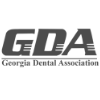Usually recommended to improve a patient’s orofacial (mouth and face) appearance, Braces are a popular form of orthodontic treatment that can benefit those of all ages. Dental concerns such as crooked or crowded teeth, overbites and underbites, and disorders of the jaw are a few problems addressed by braces. While the result is a straighter, more pleasing smile, the purpose of braces extends beyond aesthetics. Because teeth are easier to clean when they are properly aligned, those having received orthodontic treatment using braces typically have less tooth and gum disease. In addition, a healthy bite resolves issues with chewing and speaking. Here is a breakdown of the types of braces and the appliances and accessories that make them so effective.
Braces: Types
Metal Braces: Considered the most traditional type, metal braces consist of high-quality stainless steel brackets that are bonded to teeth. Wires connect each bracket and are adjusted regularly to help teeth move into desired position.
Ceramic Braces: Less prominent than metal braces, Ceramic Braces are composed of clear or tooth-colored brackets. Like traditional braces, wires are used to connect each bracket, helping teeth to shift.
Invisalign: As a series of clear, customized, and removable aligner trays, Invisalign is ideal for patients with mild misalignments and those with cosmetic concerns.
Lingual Braces: Bonded “behind” teeth, Lingual Braces are hidden from view, and ideal for adult professionals that are seeking the same result as traditional braces with discretion.
Braces: Appliances and Accessories
Elastics: Used with traditional and ceramic braces, elastics (rubber bands) are efficient in helping improve the fit of the upper and lower teeth by attaching to hooks on brackets.
Forsus: As an alternative to head gear, the Forsus appliance helps guide growth in adolescents with the purpose of eliminating overbites and preventing the need for jaw surgery.
Herbst: Like the Forsus, the Herbst appliance seeks to guide growth with the purpose of reducing an overbite, while encouraging the lower jaw to move forward as the upper molars move back.
Palatal Expander: Often used as a precursor to braces, this adjustable appliance is used to “widen” the palate.
Grateful Dental is a full service family dental practice with a complete array of orthodontic services. It’s our practice to help your family achieve a straighter, more confident smile that will promote superior oral health. Do you have questions about braces? You can turn to Dr. Leia Porcaro at Grateful Dental. We welcome your call today.














